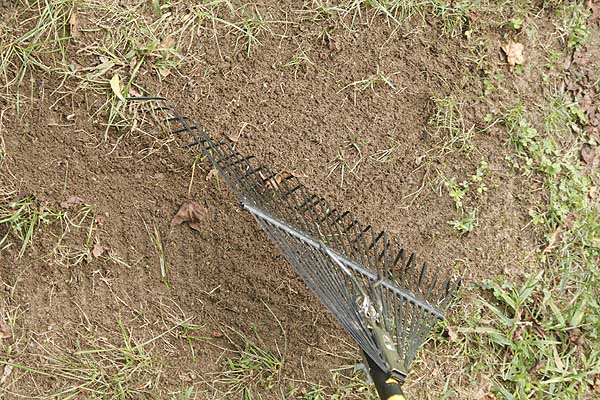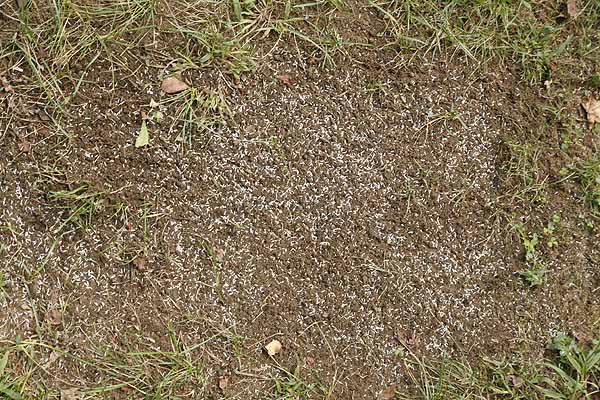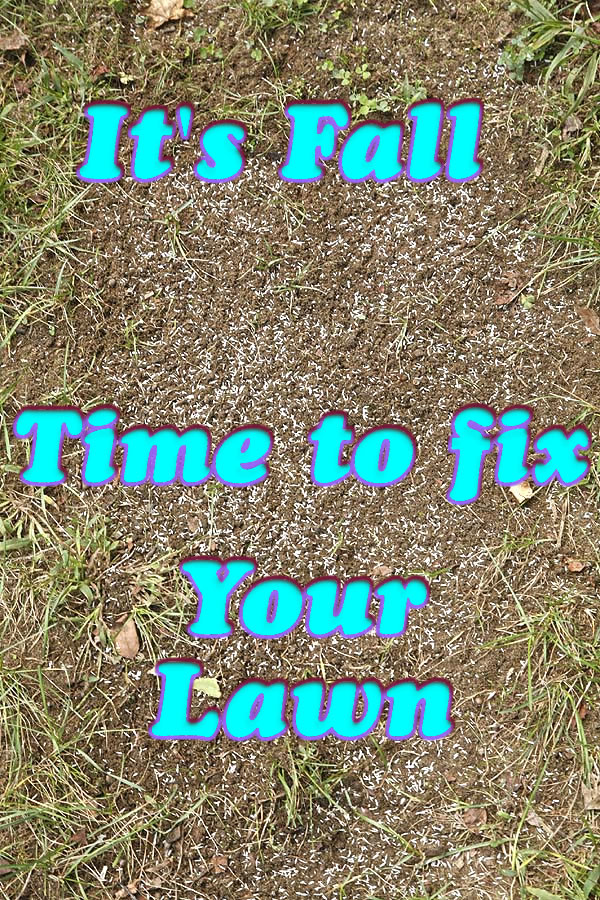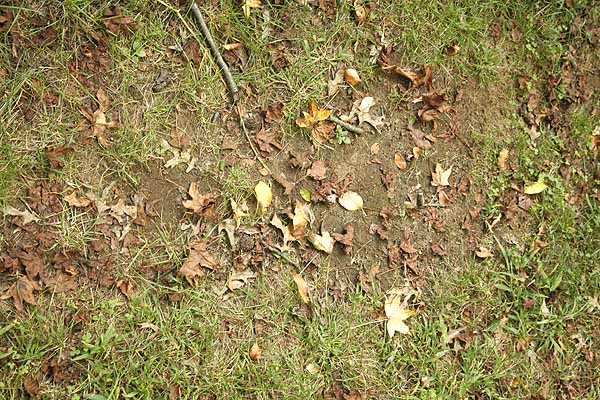Normally the ‘rule of thumb’ is to work on lawns around labor day here in the northeast but this year the weather has been hot and dry. Finally the temperatures are cooling down and we have had some rain moving in so at last the grass can wake up from its dormant slumber and start to grow again.
If you have any bare spots or need to do lawn renovation this is the time to do it. Putting down grass seed in the fall and early winter is the best time as grass germinates easily and at this time of the year has little competition with weed seeds. This means that it can get a good established hold before the spring when the weed seeds wake up again and try to overwhelm it. While you can seed in the spring the little grass seeds then have to compete with the weed seeds more and often chemicals need to be applied to keep them down while your grass grows. In fall there is no need for this step which keeps chemical use down. This is always a plus in my opinion.
Choose the right grass seed for the area you are working.
Not all grass is made alike make sure that you get the best variety or mix for the area that you wish to cover. See article on grass varieties. Your local garden center or big box store should have a variety of grass mixes to choose from. Big box stores however most likely don’t have knowledgeable staff that can help you choose your grass mix. A good garden center with knowledgeable staff is always a much better choice as they can give you advice on what the best grasses are to grow in your area. A lot of good garden centers are very choosy about their staff they will only hire people who are master gardeners or have other specialized qualifications.
If you want to do your own research then one of the best sites is lawngrasses.com. They have a series of questions that will help you determine what the best grass mix for your specific area is. Once you have that you can either buy it from them of note down their recommendations and look for a similar mix locally. This is a resource that I always recommend to people calling our master gardener hotline.
Prepare the ground.
If you have not done so then having a soil test done on your lawn is a good idea. If you have a large lawn front and back it’s a good idea to have separate ones done for the front and back of your property. Check with your local agricultural office or master gardener network to determine where your local soil test lab is located. Almost all land grant universities have a soil test laboratory. While you can go to a private laboratory to have your soil tested most of these do not make recommendations as to how you should amend your soil while land grant labs do. For most people this is the most important piece. Private soil labs can offer a much more detailed soil test but that is no use if you have not been trained to read it.
Once you have your soil test results you can amend your soil in the best way possible to help your grass.
If you don’t have time for a soil test now, then have one done in the spring. While most gardeners don’t really understand the use of a soil test it can make the difference between having plants and not having them. I will be doing an article later on soil tests.
Renovating your lawn is a whole different and more time consuming process and I will deal with that in a different article.
Filling bald spots.
Once you have your grass seed mix then its time to put the seed down. Pull out any really large or unpleasant spreading weeds from around the area that you are intending to reseed.



Grass seed needs light to germinate but it also needs good soil contact to ensure it has enough water to swell and germinate.
Early care.
Keep the area moist. Grass needs water to germinate and grow. Often times there is sufficient rain in the fall to achieve this but if there is not go out with a watering can, for small spots or sprinkler for larger ones and water every day. Watering in the evening allows the moisture to stay around the plant for longer and not immediately burn off in the sunshine.
Keep off the area! Never step in the area where the grass seed is. Don’t step on it at all until the springtime. Grass will germinate quickly, it usually takes about a week then suddenly its all germinated and you have a new lawn. Keep it watered until the winter comes and the ground freezes. This early start will allow the grass to establish well and help beat out the weeds for next year.
Keep the chemicals in the bottles.
Try as much as possible NOT to put chemicals on your lawn. They are toxic, far more toxic that the ones the farmers use on their fields to prevent weeds. They can kill all the life in the soil, the kill butterflies and bees that are essential to our existence. They can poison you and your family, just because you can buy it easily in the store does not mean its not dangerous. While many people consider its important to have a very artificial monoculture of grass around their home its not the most healthy thing for your, your family or the environment. Its not really important if you have a few weeds in your lawn in fact its far more healthy! From a good ecological perspective the best lawn is one made up of a variety of perennial plants that create a short green blanket around your home. The objective of a good lawn it to prevent unpleasant annual weeds from taking over and having bald spots. Having clover and other plant in the lawn makes it healthy and much better for the environment. So go for a ecological lawn and not a artificial monoculture.
This is part of a series of articles on lawns, how to create and maintain healthy ecological ones.


